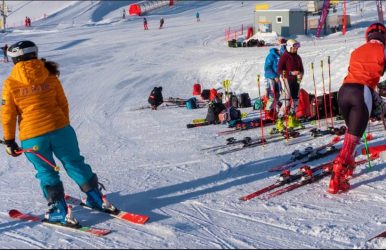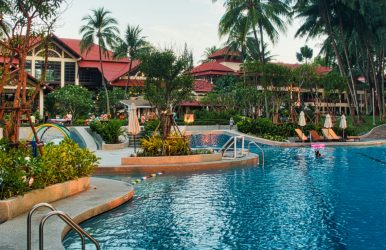Role of Corporate Travel Agencies in Sustainable Business Travel
BY Ankita Feb 5, 2024
Sustainable travel practices are becoming increasingly vital for corporate travel agencies as they navigate the complexities of modern business needs and environmental responsibilities. By integrating sustainability into their policies and offerings, these agencies not only support eco-friendly initiatives but also address the burgeoning demand for responsible travel options. A corporate travel agency can play a pivotal role in reducing a company's carbon footprint through various strategies, such as offering flights with lower emissions, eco-friendly accommodations, and ground transportation options that minimize environmental impact. With the rise of sustainability, corporate travel agencies have an opportunity to lead the change towards more responsible business travel. These agencies are instrumental in educating clients about the environmental impact of their travel choices and providing them with sustainable alternatives that align with their corporate social responsibility goals. By leveraging their expertise and industry connections, travel agencies can help businesses implement sustainable travel practices that contribute to a greener future without compromising on efficiency and convenience. Key Takeaways Corporate travel agencies are essential for promoting sustainability in business travel. Agencies aid in reducing travel-related carbon footprints through eco-friendly options. Expertise from agencies assists companies in adopting sustainable travel practices. The Impact and Importance of Sustainable Business Travel Your understanding of sustainable business travel is crucial not only for reducing your company's carbon footprint but also for contributing positively to the environment. With a rise in awareness about climate change, corporate travel agencies are key players in helping businesses travel smarter. Understanding the Environmental Impact of Business Travel When you consider business travel, it's important to recognize the substantial environmental impact it can have. Flights, for instance, contribute significantly to greenhouse gas emissions, with aviation accounting for about 2% of global energy-related CO2 emissions. Since transportation is a critical component of corporate travel, the energy used in business trips directly correlates to increased carbon emissions, thus accelerating climate change. Integrating Sustainable Travel Options into Corporate Travel To address these issues, your corporate travel policies must integrate sustainable travel options. This could involve: Choosing flights that use sustainable aviation fuel Partnering with vendors prioritizing sustainability Utilizing a carbon calculator to track and manage carbon emissions By doing so, you actively participate in reducing the carbon footprint of your business travels. Additionally, corporate travel managers are now sourcing sustainable vendors and incorporating these practices as a standard in travel programs, which increasingly reflects your company's commitment to social responsibility. Strategies for Implementing Sustainable Travel Practices Transitioning to sustainable business travel isn't simply a trend; it's an essential evolution in response to global environmental challenges and consumer expectations. As a corporate travel agency, your strategic implementation of sustainable practices is imperative. The Role of Technology and Innovation in Sustainable Travel Technology and innovation serve as the backbone for advancing sustainable travel. Travel policies can be greatly enhanced by integrating software that tracks and reports on carbon emissions, encouraging customers to opt for greener options. For instance, using platforms that offer carbon-neutral travel options provides travelers with transparent and impactful choices. You can further foster responsible travel by investing in technology that simplifies the booking of eco-friendly accommodations and transportation. Examples of technology aiding sustainable travel: Carbon emission tracking tools: Helps in monitoring and reducing the traveler's carbon footprint. Eco-rating systems: Assists customers in choosing services with lower environmental impacts. Building Connections with Local Communities and Tourism Developing connections with local communities and encouraging sustainable tourism are also vital. Strong relationships lead to more authentic travel experiences and ensure that the benefits of tourism extend to the local economy. As a travel agency, advocate for travel experiences that respect local regulations and customs and promote sustainability. Ways to connect with local communities include: Local sourcing: Advocate for using local guides and services. Supporting local ventures: Encourage travelers to engage with businesses that give back to the community. By prioritizing these strategies, your agency plays a critical role in shaping a more sustainable future for the travel industry. Sustainable Business Travel Tips Here are some of the best sustainable travel practices that corporations can implement in order to decrease their carbon footprint without having to give up business travel. Book Your Business Trips Selectively Getting a change of air and venue to get out of the daily grind in the office is something every corporate likes. However, the organizations of these individuals must question their need for such extravagant in-person travel. As it happens, this can greatly affect the ecological footprint of the organization. Businesses can help discourage such short trips and encourage a string of numerous trips together. Companies must consider if virtual alternatives could also be a possibility. Many corporate conferences offer virtual options through video conferencing tools that help workers attend a session and listen to the speakers without having to travel. ‘ Eco-Friendly Transportation If the traveling distance is not too far away, then businesses must ask their employees to take a train instead of a flight. According to the Journal of the Air & Waste Management Association, railways have lesser carbon emissions than air travel. Trains also have a higher comfort quotient with better views and increased legroom. It may be that taking a train is not an option in certain cases. If travelers must get on a plane, businesses must encourage them to take a direct flight. Takeoff and landing cycles influence carbon emissions. The fuel combustion at takeoff and cruising to higher altitudes is very high. Flights with layovers could be more economical but it does not help the environment get any better. Choose Green Hotels Many hospitality chains around the world have reduced their carbon footprint. While booking hotels, ask them about the steps they have taken to go green and if they have a LEED certification. It is a certification program that acknowledges sustainably built systems. Hotels now provide just new sheets and towels on arrival, which helps conserve water and energy in the process. In some hotels, single-use toiletries are no longer in use. Now, they offer bulk items such as shampoo, conditioner, and body wash in the shower. This eliminates the production of excess waste in the landfill. Conclusion Corporate travel agencies have a critical role in shaping sustainable business travel practices. Through their expertise, they guide you in adopting green travel policies, ensuring that your business's travel footprint aligns with broader sustainability goals. By choosing suppliers with sustainable credentials and continuously monitoring travel impacts, your travel program can contribute to protecting the environment while also promoting social responsibility within your organization. In partnership with these agencies, you have the power to make each business trip an opportunity for positive change. Learn More About: How To Save Money On A Trip To Abu Dhabi? 7 Tips To Make The Most Out Of Your Trip To Gatlinburg How To Use Videos To Drive Conversions In Travel Business?












